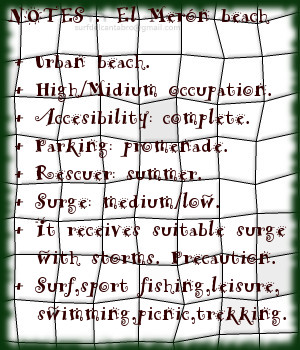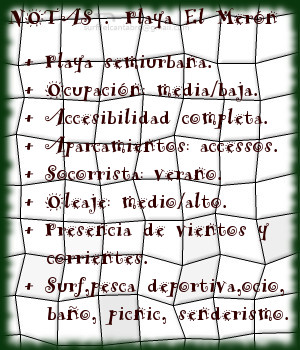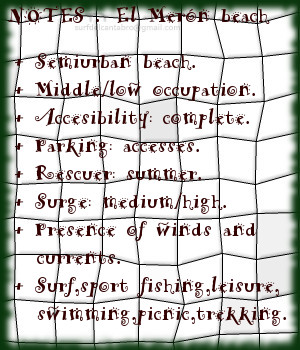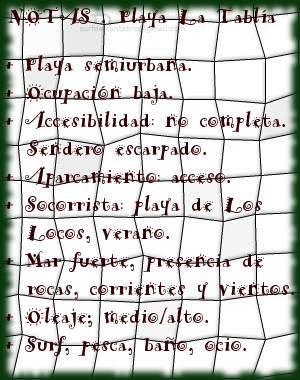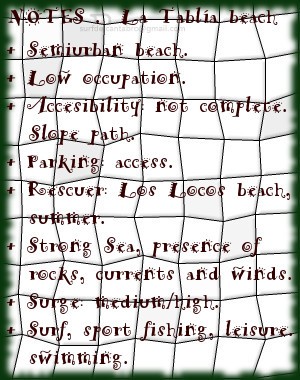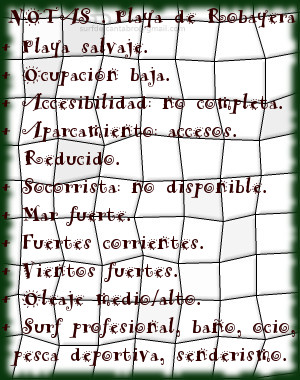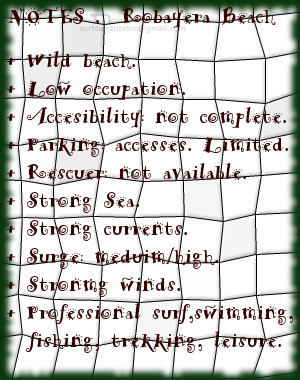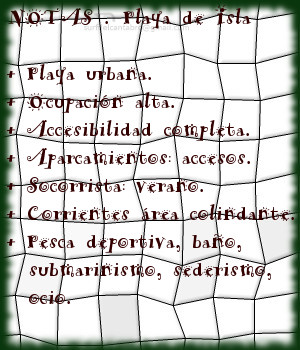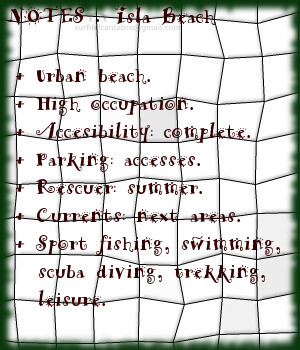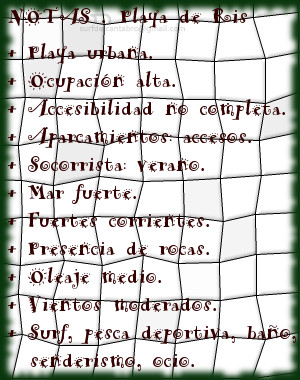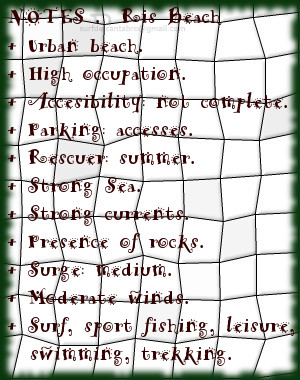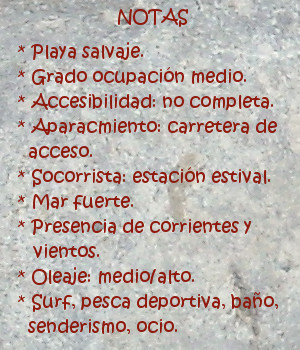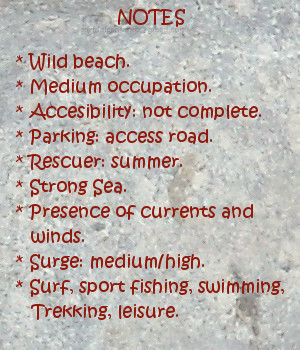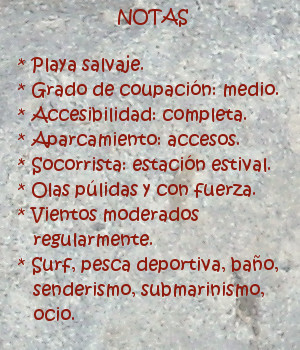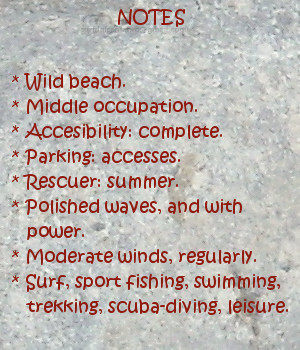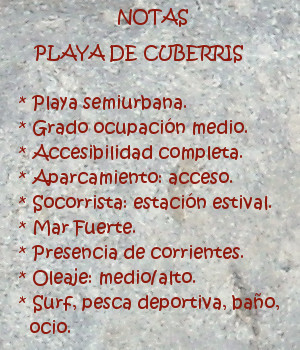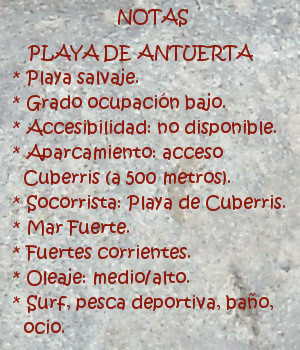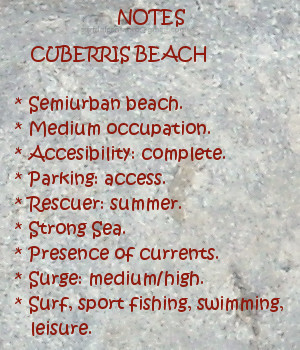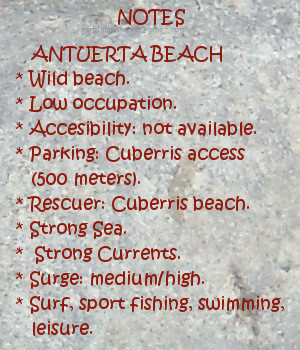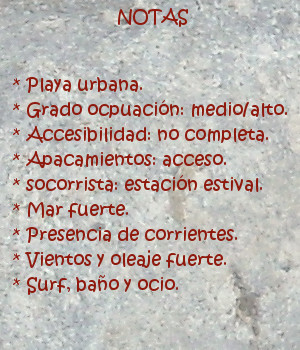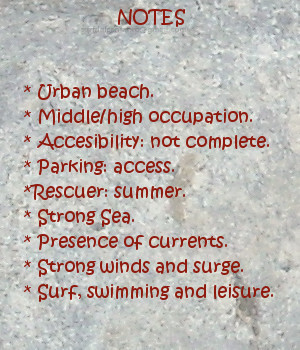La Salvé, playa
![]() La playa de La Salvé se encuentra en el municipio de Laredo, ubicado en la costa oriental de Cantabria. Es un extenso arenal de más de cuatro kilómetros de longitud y anchura media aproximada de 140 metros. Jalonada por un paseo marítimo a lo largo de su recorrido que la presenta y permite al caminante disponer de una posición privilegiada para su contemplación.
La playa de La Salvé se encuentra en el municipio de Laredo, ubicado en la costa oriental de Cantabria. Es un extenso arenal de más de cuatro kilómetros de longitud y anchura media aproximada de 140 metros. Jalonada por un paseo marítimo a lo largo de su recorrido que la presenta y permite al caminante disponer de una posición privilegiada para su contemplación.
Empezando el paseo en el extremo derecho, próximo al puerto deportivo, avanzan los pasos a través de la media luna que dibuja este allí. Caminando, podemos disfrutar de la villa a mano izquierda y del Mar a mano derecha. Varias entradas al arenal aparecen al encuentro para, una vez atraídos, acceder a la playa. Pasado el pequeño sistema dunar cercano al paseo, asoma un llanura que se extiende por debajo de sus aguas, pues La Salvé recuerda a una playa de otros mares. Para alcanzar profundidad, debemos recorrer una extensión mayor que en el resto de playas cántabras.
Debido a las características de la playa, la presencia de olas no es regular. Los tamaños medios ó bajos de las ondas se ven incrementados cuando arrecia temporal, abriendo numerosos picos de olas a lo largo de La Salvé, que se suceden a izquierdas y derechas. Su configuración y parámetros, la convierten en una zona ideal para practicar sky-surf y paddle-surf, wind-surf. El otoño e invierno traen a Laredo los mejores momentos de surf, que ayudados con la gran extensión y fisionomía de la zona, ofrecen a los surfistas un circuito con variedad cuantitativa y cualitativa.
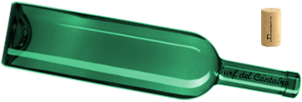
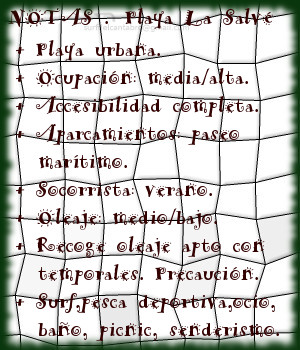
The Salvé, beach
![]() The beach of The Salvé is in the municipality of Laredo, located in the oriental coast of Cantabria. It is an extensive sandbank with more than four kilometres of length and average approximate width of 140 meters. Marked by a maritime walk along its tour that presents it and allows to the wayfarer to have a position favoured for the contemplation.
The beach of The Salvé is in the municipality of Laredo, located in the oriental coast of Cantabria. It is an extensive sandbank with more than four kilometres of length and average approximate width of 140 meters. Marked by a maritime walk along its tour that presents it and allows to the wayfarer to have a position favoured for the contemplation.
Beginning the walk in the right wing, next the sports port, the steps advance across the half moon that draws this one, there. Walking, we can enjoy the villa to the left hand and the Sea to the right hand. Several points to income to the sandbank appear to the meeting for; once attracted, accede to the beach. Then the small dune system near the promenade, it puts out a llanura that spreads below his waters, because The Salvé resembles a beach of other seas. To reach depth, we must cross a major extension than the rest of Cantabrian beaches.
Due to the characteristics of the beach, the presence of waves is not regular. The average sizes or low of the waves are increased when storms arrive, opening numerous beaks of waves along The Salvé, that open to the left and right sides. Its configuration and parameters, turn it into an ideal zone to practise sky-surf, paddle-surf and windsurfing. The autumn and winter bring to Laredo the best moments of surf, which helped with the great extension and physiognomy of the zone, offer a circuit to the surfers with quantitative and qualitative variety.

